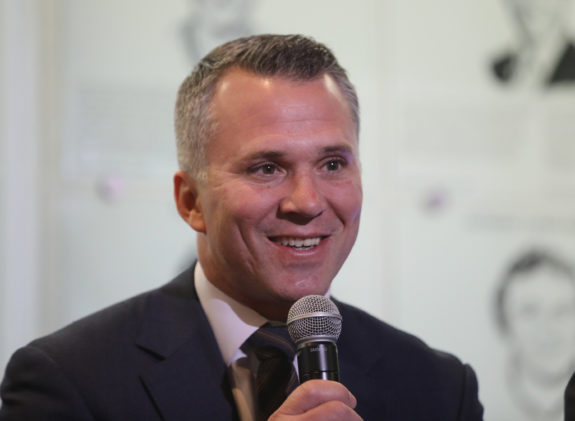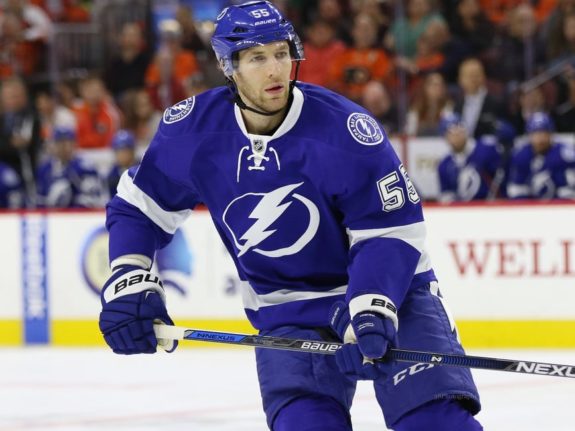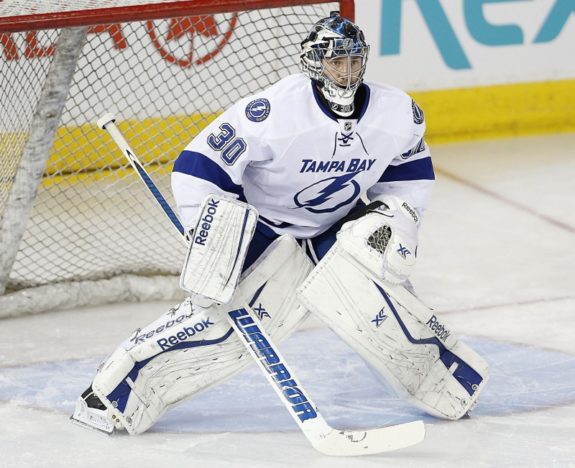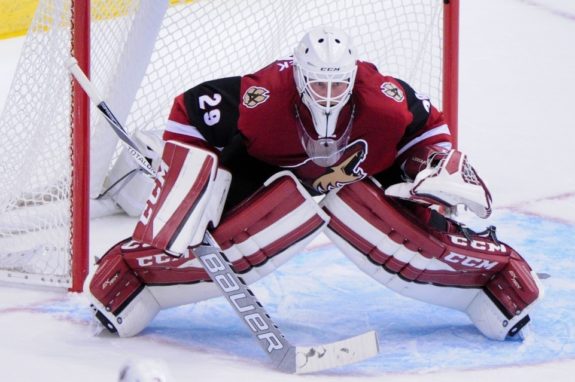
 Eugene Helfrick
The Hockey Writers
Eugene Helfrick
The Hockey Writers
60
Reads
0
Comments
Lightning’s 3 Worst Trades of the Decade
Over the course of the last ten years, the Tampa Bay Lightning made a number of franchise-altering trades. The 2010s were a busy one for the Lightning, with general managers Steve Yzerman and Julien BriseBois finding themselves active as both buyers and sellers on the trade market.
While the Lightning may have made a lot of big trades, few of these moves could be considered truly bad. Even as they balanced rebuilding their prospect pool, shedding salary to stay under the cap, and trading a captain, Tampa Bay found ways to make moves that didn’t sell too much of the future for success in the now.

Despite this, not every trade has turned out perfectly for Tampa Bay. With the decade coming to close, let’s look back at a few moves that Lightning fans may look back at with regret.
Lightning Swap Picks at the 2014 Draft
Heading into the 2014 NHL Draft, the Lightning had two selections in the first round, the 19th, and 28th overall picks. After drafting Anthony DeAngelo 19th overall, Yzerman decided to move back in the draft with the 28th, trading the pick to the New York Islanders for two second-rounders.
With those two picks, the Lightning selected defensemen Dominik Masin and Jonathan MacLeod. At the time, this seemed like a smart move, as the Lightning added two high-ceiling defensive prospects to their lacking pool of talent.
Unfortunately, both Masin and MacLeod struggled to develop into NHL caliber defensemen. Neither defender has played a game with the Lightning, with MacLeod not being signed after he finished four seasons in the NCAA.
Related: The Lightning’s 3 Best Trades of the Decade
The 28th overall pick wasn’t particularly successful for the Islanders either, as their selection of Josh Ho-Sang failed to pan out in a meaningful way. However, given a mulligan, the Lightning may have wanted to keep the 28th pick instead of trading it, to either take a swing at Ho-Sang or picking a Stanley Cup winner like Ivan Barbashev.
Braydon Coburn for Radko Gudas and Picks
To start off, this trade was not a bad one by any means for the Lightning. Braydon Coburn is a constant in Tampa Bay, playing in 327 regular-season games, along with 62 playoff appearances. He has been everything that the team could have hoped for when they acquired him at the 2015 Trade Deadline, and they would likely make the trade again if given a second chance.

There is, however, reason to discuss what the Lightning gave up to acquire Coburn. They traded Radko Gudas, a first and a third-round selection at the 2015 draft to the Philadelphia Flyers. Gudas went on to play in 290 games for the Flyers, tallying 73 points and 355 penalty minutes, making him a successful player in his own right.
While the third-round selection for the Flyers didn’t pan out, the first-rounder brought Travis Konecny (after a series of pick-swaps) to the franchise. Since the start of the 2016-17 season, Konecny has been a starter for Philadelphia, scoring 157 points in the process.
So, while Coburn has been a great defenseman for the Lightning, you can argue that keeping Gudas and selecting a young, scoring forward may have been a better long-term move for the franchise.
Anders Lindback for a Bevy of Picks
Now for the one Lightning trade this decade that can be considered a complete miss. Heading into the 2012 offseason, Yzerman decided it was time to address Tampa Bay’s clear need for a franchise goaltender.
In order to do this, Yzerman drafted Andrei Vasilevskiy in the first round of the 2012 draft and traded two 2012 second-round picks along with a 2013 third to the Nashville Predators for goaltender Anders Lindback.

Throughout his two seasons in Tampa Bay, Lindback struggled to establish himself in the net. While some of this was due to the Lightning’s lackluster defense at the time, he just could never settle down as a starter. due to this, despite investing three draft picks, Yzerman parted ways with him after only two seasons.
Fortunately for the Lightning, they acquired Ben Bishop at the 2013 Trade Deadline, and he ended up becoming that franchise-goaltender that the team was desperate for at the time. So, while Lindback didn’t work out, the team still found an answer in net.
Lightning Made Few Trade Mistakes in the 2010s
One thing that is clear about the Lightning’s trade history throughout the 2010s is that the franchise rarely made a completely wrong choice. Even with a player like Lindback not working out, you can at least understand why the trade was made and appreciate the chance that was taken.

When you can look back at 10 years and only find a handful of questionable trades, something went right for a team. Hopefully, the Lightning will continue to see as much success on the trade front in the 2020s as they did in the 2010s because that will likely mean that they are still finding success years down the line.
All statistics are taken from hockey-reference.com
The post Lightning’s 3 Worst Trades of the Decade appeared first on The Hockey Writers.
Popular Articles

















































 Blackhawks Chicago
Blackhawks Chicago Panthers Florida
Panthers Florida Penguins Pittsburgh
Penguins Pittsburgh Rangers New York
Rangers New York Avalanche Colorado
Avalanche Colorado Kings Los Angeles
Kings Los Angeles Maple Leafs Toronto
Maple Leafs Toronto Bruins Boston
Bruins Boston Capitals Washington
Capitals Washington Flames Calgary
Flames Calgary Oilers Edmonton
Oilers Edmonton Golden Knights Vegas
Golden Knights Vegas Senators Ottawa
Senators Ottawa Lightning Tampa Bay
Lightning Tampa Bay Flyers Philadelphia
Flyers Philadelphia Islanders New York
Islanders New York Sabres Buffalo
Sabres Buffalo Red Wings Detroit
Red Wings Detroit Devils New Jersey
Devils New Jersey Hurricanes Carolina
Hurricanes Carolina Blue Jackets Columbus
Blue Jackets Columbus Predators Nashville
Predators Nashville Wild Minnesota
Wild Minnesota Blues St. Louis
Blues St. Louis Stars Dallas
Stars Dallas Jets Winnipeg
Jets Winnipeg Mammoth Utah
Mammoth Utah Sharks San Jose
Sharks San Jose Canucks Vancouver
Canucks Vancouver Ducks Anaheim
Ducks Anaheim






